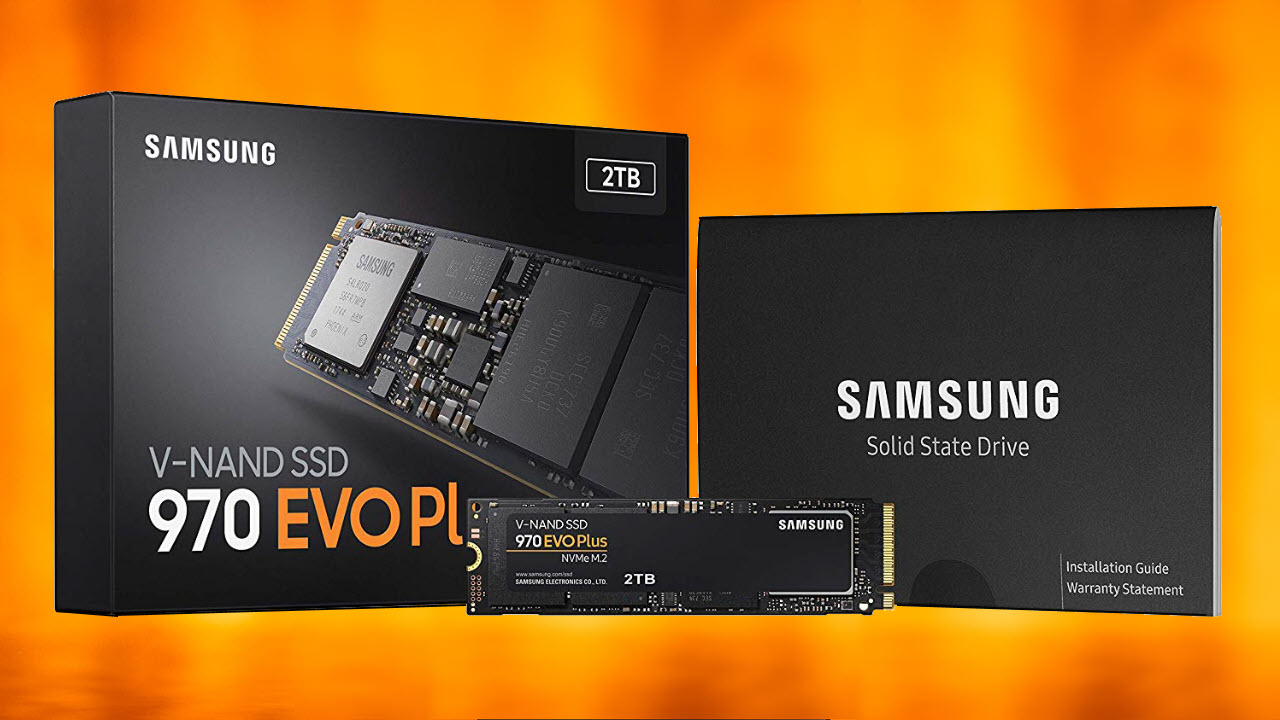Tom's Hardware Verdict
With better performance, efficiency, and lower MSRPs, Samsung’s 970 EVO Plus is a big "plus" in almost every way over its predecessor. It rivals its bigger brother, the 970 PRO, and comes with a complete software suite, making the Samsung 970 EVO Plus a great buy.
Pros
- +
Solid overall performance
- +
Black PCB
- +
Excellent software package
Cons
- -
Could use further efficiency optimization
Why you can trust Tom's Hardware
Samsung's 970 EVO Plus replaced the ever-popular 970 EVO as its mainstream NVMe SSD for tech enthusiasts, hardcore gamers, and professionals. Samsung equipped the SSD with V5 flash, which provides a nice bump in performance up to 3.5 GB/s of sequential read throughput. The drive also boasts hardware encryption support, a five-year warranty, and up to 1,200 TBW of endurance. Overall, the 970 EVO Plus is one of the fastest SSDs we've tested, so it easily gains our recommendation.
Though at press time, the 970 EVO didn't quite outpace the competition and make our best SSDs list, it's an excellent drive and very worthy of your consideration. That's particularly true if you're looking for greater endurance than more budget-friendly competitors like the Adata XPG SX8200 Pro.
The 3D NAND craze began in 2013. Since then, it has been a race to see who can push the layers the highest, deliver the highest density, and, of course, offer the best performance. Last year, IMFT (Intel/Micron), Flash Forward (Toshiba/SanDisk), and SK Hynix all announced their 96-layer NAND that offers improved speed and density over 64-layer parts.
Unlike their competitors that have already announced 96-layer 3D NAND, Samsung hasn’t announced the exact number of layers in its V5 V-NAND. That's strange given the company's typical transparency and in-depth performance and hardware specifications.
Samsung does say that its latest 9x-layer flash operates at much faster speeds than its 64-layer predecessor and features a low 1.2V I/O rating. The new flash also supports the Toggle 4.0 interface, operates at 1.4GT/s, and comes with a 256Gb die density for the 250GB, 500GB, and 1TB 970 EVO Plus models. A 2TB model will come later, bringing with it a 512Gb die.
The new 9x-layer V-NAND, combined with the 970 EVO Plus's firmware optimizations, improves random write performance significantly and gives the SSD a slight boost in random read performance, too. Sequential write speeds also increased by 800MB/s.
Samsung’s 970 EVO Plus can dish out up to 3.5GB/s of sequential read performance and up to a staggering 3.3GB/s write. It also delivers up to 620,000/560,000 random read/write IOPS.
Get Tom's Hardware's best news and in-depth reviews, straight to your inbox.
| Samsung SSD 970 EVO Plus | ||||
| Capacity | 250 GB | 500 GB | 1 TB | |
| TurboWrite Capacity | Default | 4 GB | 4 GB | 6 GB |
| Intelligent | 9 GB | 18 GB | 36 GB | |
| Total | 13 GB | 22 GB | 42 GB | |
| Sequential Write Performance (Up to) | TurboWrite | 2,300 MB/s | 3,200 MB/s | 3,300 MB/s |
| After TurboWrite | 400 MB/s | 900 MB/s | 1,700 MB/s |
The 970 EVO Plus's write performance varies based on how much data lands in the TurboWrite cache, which is a small section of faster SLC-programmed flash that's used to boost performance. Samsung's EVO Plus has both a default TurboWrite cache capacity, which doesn't change regardless of conditions, and an Intelligent TurboWrite region that varies in size depending on the model and the amount of free space on the drive.
For instance, the 1TB model provides 6GB of TurboWrite capacity. Beyond that, Intelligent TurboWrite steps in and scales up to an additional 36GB if you have enough free space on the drive.
Given the limited size of the TurboWrite cache, some large file transfers and workloads will land in the slower TLC flash. Even with the new NAND interface operating 40 percent faster than it did with V4 V-NAND, direct-to-TLC writes are still slower than the Intelligent TurboWrite region. But Samsung also improved the write performance of the TLC flash, which helps reduce the impact in those conditions. Samsung provides performance specifications for both TurboWrite and "after TurboWrite" performance, as listed in the chart above.
Specifications
| Product | Samsung 970 EVO Plus 250GB | Samsung 970 EVO Plus 500GB | Samsung 970 EVO Plus 1TB | Samsung 970 EVO Plus 2TB |
| Pricing | $89.99 | $129.99 | $249.99 | N/A |
| Capacity (User / Raw) | 250GB / 256GB | 500GB / 512GB | 1000GB / 1024GB | 2000GB / 2048GB |
| Form Factor | M.2 2280 Single-Sided | M.2 2280 Single-Sided | M.2 2280 Single-Sided | M.2 2280 Single-Sided |
| Interface / Protocol | PCIe 3.0 x4 / NVMe 1.3 | PCIe 3.0 x4 / NVMe 1.3 | PCIe 3.0 x4 / NVMe 1.3 | PCIe 3.0 x4 / NVMe 1.3 |
| Controller | Samsung Phoenix | Samsung Phoenix | Samsung Phoenix | Samsung Phoenix |
| DRAM | 512MB Samsung LPDDR4 | 512MB Samsung LPDDR4 | 1GB Samsung LPDDR4 | 2GB Samsung LPDDR4 |
| Memory | Samsung 9x-layer V-NAND TLC | Samsung 9x-layer V-NAND TLC | Samsung 9x-layer V-NAND TLC | Samsung 9x-layer V-NAND TLC |
| Sequential Read | 3,500 MB/s | 3,500 MB/s | 3,500 MB/s | 3,500 MB/s |
| Sequential Write | 2,300 MB/s | 3,200 MB/s | 3,300 MB/s | 3,300 MB/s |
| Random Read | 250,000 IOPS | 480,000 IOPS | 600,000 IOPS | 620,000 IOPS |
| Random Write | 550,000 IOPS | 550,000 IOPS | 550,000 IOPS | 560,000 IOPS |
| Encryption | Class 0 (256-bit FDE), TCG Opal 2.0, Microsoft eDrive | Class 0 (256-bit FDE), TCG Opal 2.0, Microsoft eDrive | Class 0 (256-bit FDE), TCG Opal 2.0, Microsoft eDrive | Class 0 (256-bit FDE), TCG Opal 2.0, Microsoft eDrive |
| Endurance | 150 TBW | 300 TBW | 600 TBW | 1,200 TBW |
| Part Number | MZ-V7S250 | MZ-V7S500 | MZ-V7S1T0 | MZ-V7S2T0 |
| Warranty | 5-Years | 5-Years | 5-Years | 5-Years |
Samsung’s 970 EVO Plus comes in the same capacities as the previous 970 EVO, but the 2TB model won’t arrive until mid-April. Samsung hasn't announced its pricing. The 500GB and 1TB models retail for roughly $0.25-$0.26-per-GB. The 250GB model comes in at a premium $0.32-per-GB.
As it was with the predecessor, the new 970 EVO Plus features a five-year warranty and boasts the same impressive endurance ratings. The drive even comes with hardware encryption that is compatible with Windows BitLocker, at no extra charge. It also supports secure erase so you can quickly and securely clear the drive of all stored data.
Software

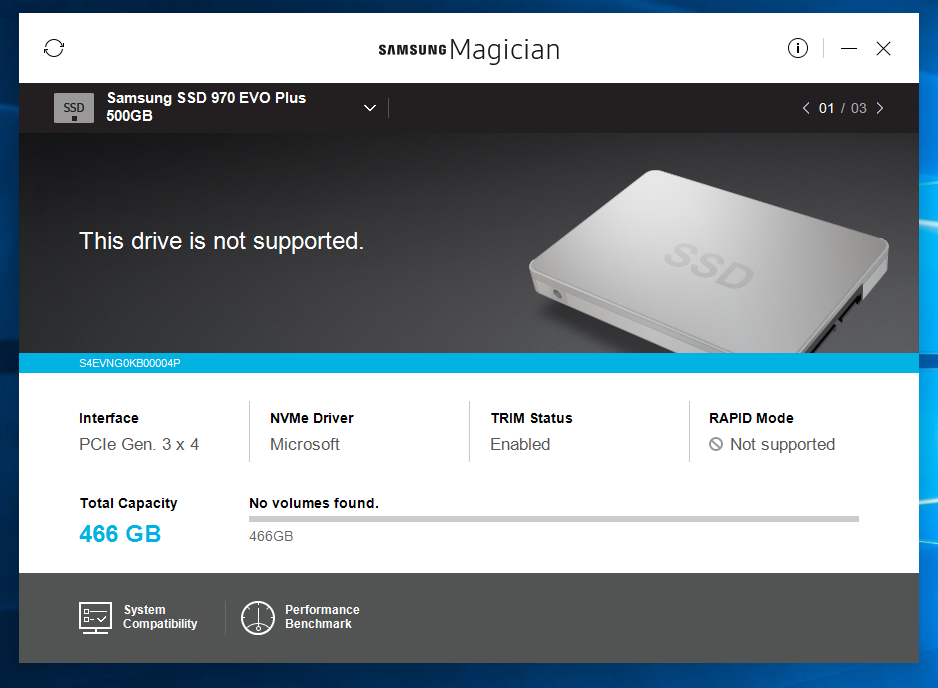
Unlike most SSDs, Samsung’s NVMe SSDs feature an optional driver download that helps to improve performance over the default Windows NVMe driver slightly. It also helps ensure compatibility with older Windows operating systems, like Windows 7.
You can use Samsung’s Magician and Data Migration software to monitor, benchmark, and even clone your existing drive’s data to your new Samsung SSD. At the time of writing, however, the latest version of Magician (v5.3) doesn't support the 970 EVO Plus yet.
A Closer Look

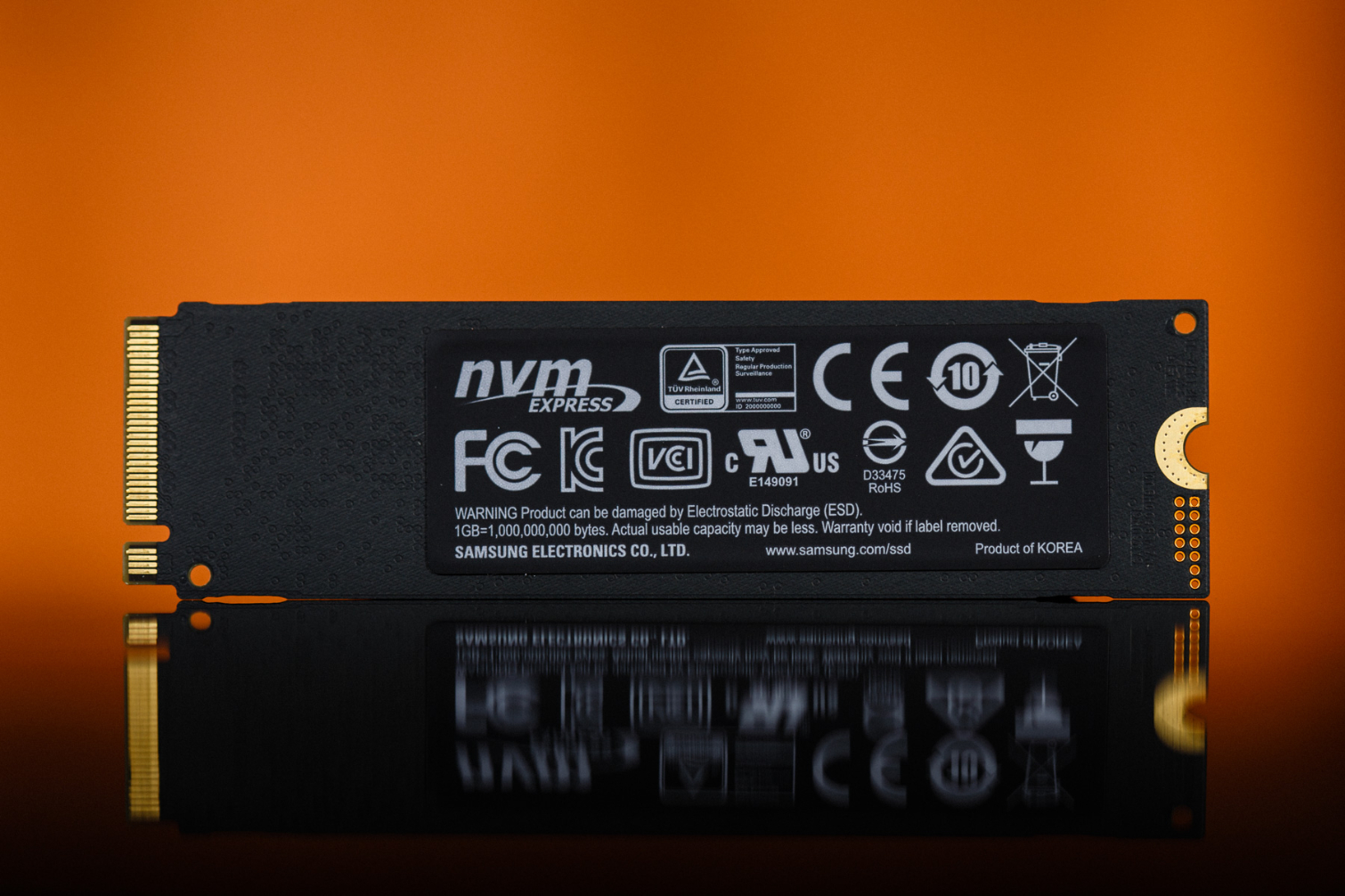


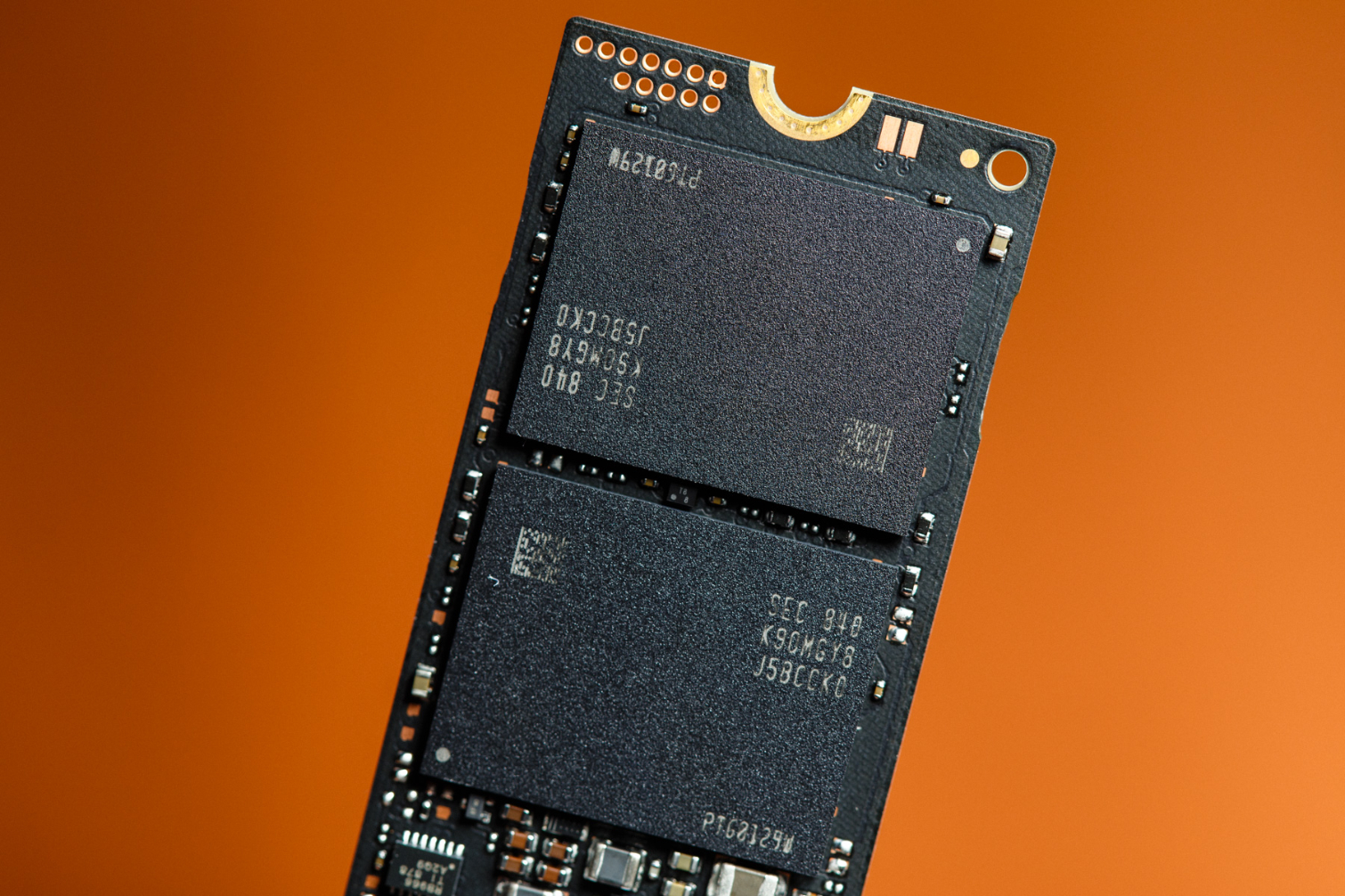

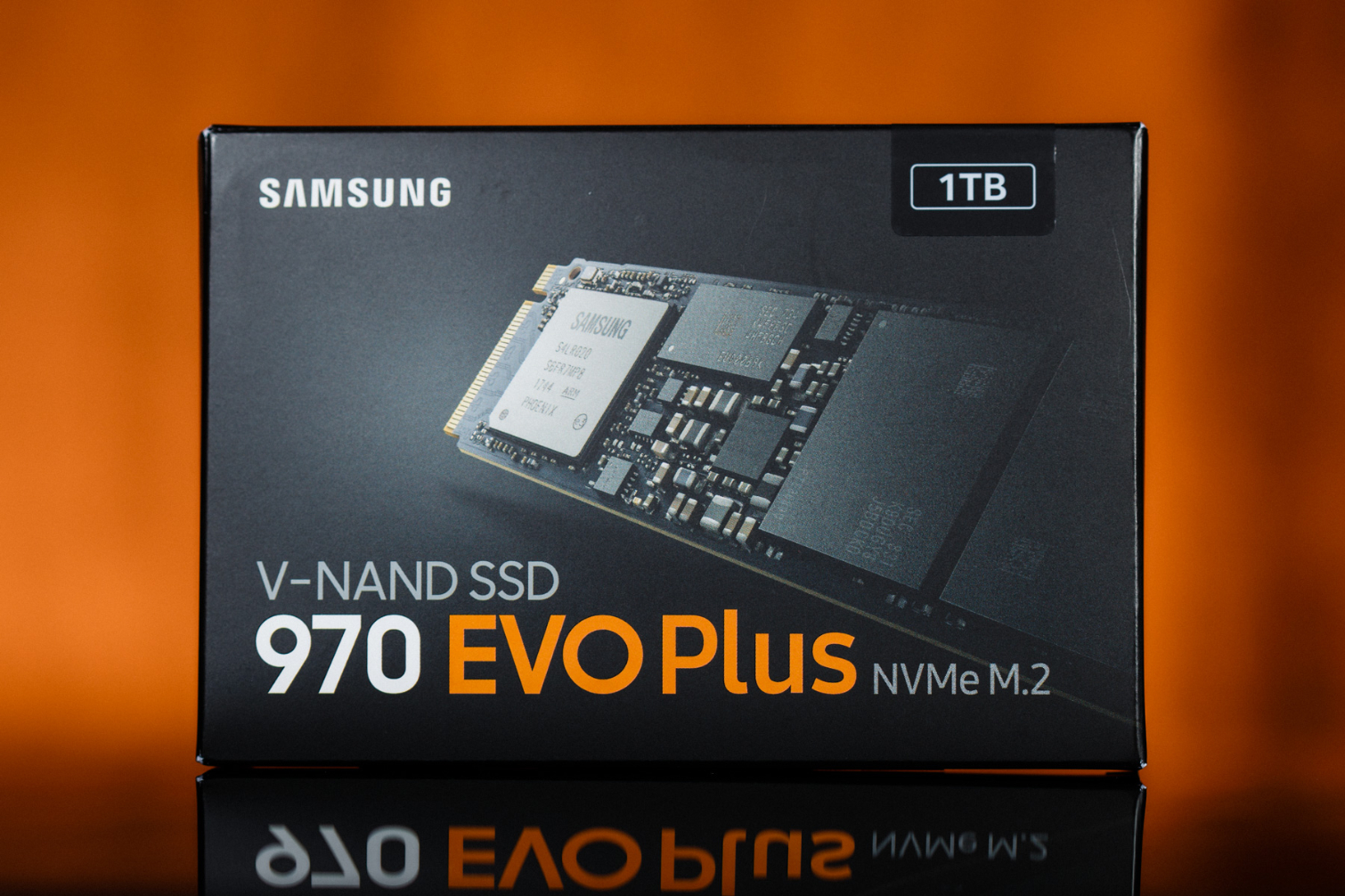

The Samsung 970 EVO Plus communicates with the host over a PCIe 3.0 x4 interface using the NVMe 1.3 protocol. It features the same Phoenix controller as its predecessor, the 970 EVO. All models come in an M.2 2280 single-sided form factor, including the 2TB drive, thus ensuring broad compatibility with notebooks.
The Plus model comes equipped with all the same advanced thermal control features as the 970 EVO. The firm also added a nickel coating on the Phoenix controller and a thin copper film on the back of the PCB to help dissipate heat efficiently. Samsung's Dynamic Thermal Guard, a thermal throttling algorithm, will slow performance if the drive gets too hot. The EVO Plus model comes with a revamped Dynamic Thermal Guard implementation that Samsung says can transfer 86 percent more data (134GB) during sequential writes before throttling kicks in.
As mentioned earlier, Samsung's V5 TLC V-NAND with 256Gb dies powers the SSD. After formatting in Windows, the 500GB and 1TB models have 465GB or 931.5GB of usable space, respectively.
MORE: Best SSDs
MORE: How We Test HDDs And SSDs
MORE: All SSD Content

Sean is a Contributing Editor at Tom’s Hardware US, covering storage hardware.
-
Talwyn Wize I do wish you'd compared it to the 960, though, so we could see the improvement in comparison to its previous generation.Reply -
seanwebster Reply21702521 said:I do wish you'd compared it to the 960, though, so we could see the improvement in comparison to its previous generation.
21702550 said:And the 970 Pro.
Unfortunately, I do not have access to either. I did get to borrow a 1TB 970 PRO temporarily for testing, so that is included, but not the 512GB model. -
TCA_ChinChin I've heard from some other sources that it's faster than the 970 pro (in some cases?).Reply -
seanwebster Reply
Check out the 1TB charts on the third page of the review. In the 50GB copy and 6GB read tests, SYSmark, and game load test it out performs it.21702700 said:I've heard from some other sources that it's faster than the 970 pro (in some cases?).
As end products both the 970 EVO and EVO Plus feature the same exact endurance rating. They have been using TLC in the EVO line up for years now.21702858 said:So, Samsung too has switched to the lower-endurance TLC...
-
mac_angel I'm curious if they've made it compatible with PCIe gen 4 with a firmware upgrade. Little odd to be coming out with a PCIe gen3 product when the gen 4 was ratified last summer.Reply -
mdd1963 sticking with my 960 EVO for the life of the rig, as it is only 2 years old and counting...Reply -
ArmadaCas Does anyone know if this SAMSUNG 970 EVO PLUS (1TB) will run in an ASUS Z170 Pro Gaming with an i7 6700k..? The documentation for the mobo mentions M.2, but not NVME, so I'm kinda lost.Reply
